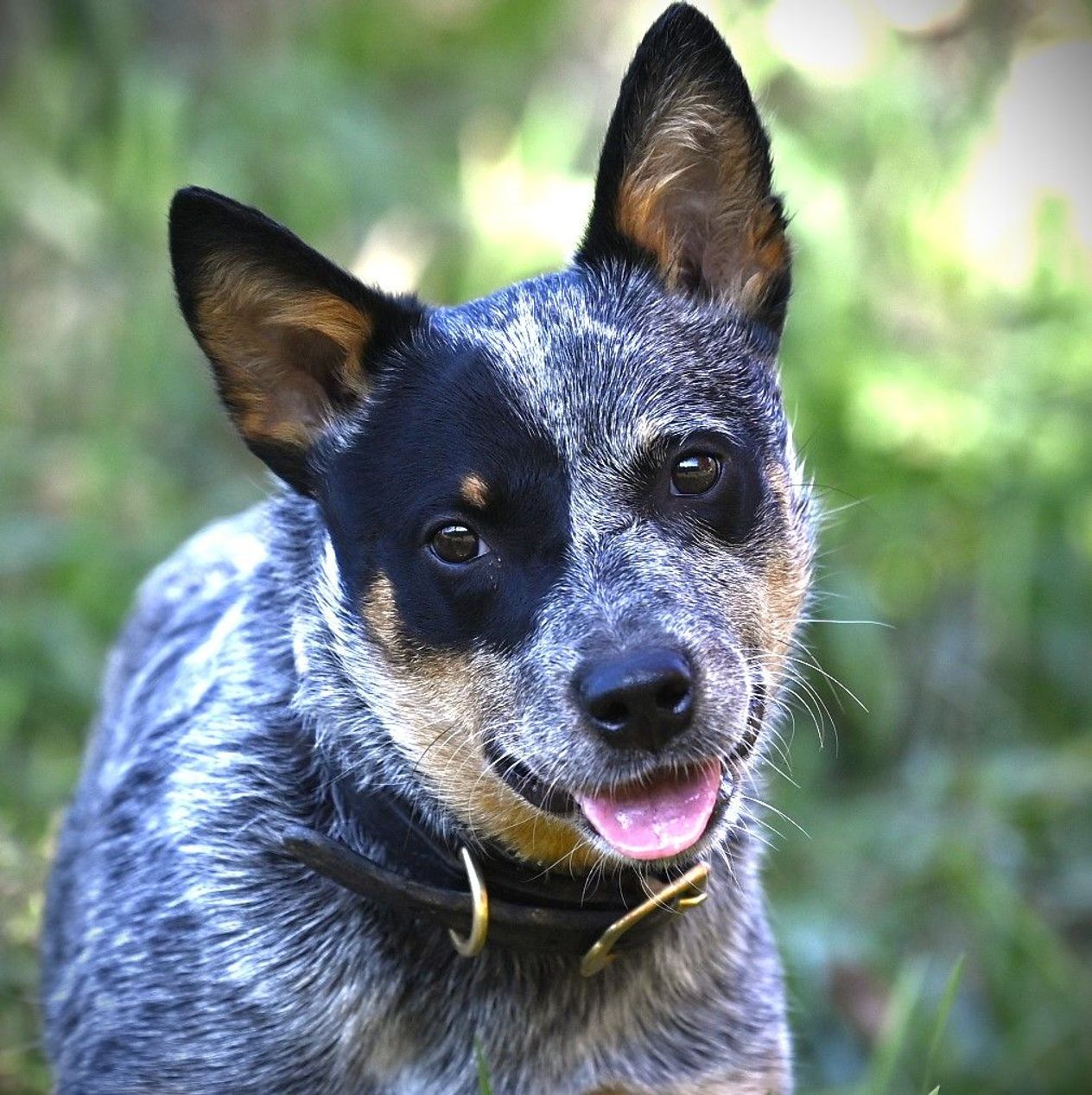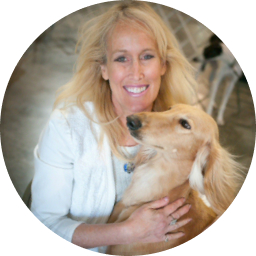Get to know
Australian Cattle Dogs

Veterinarian reviewed
The Australian Cattle Dog is a dog of many names: ACD, Heeler, Blue Heeler, Red Heeler, Australian Heeler, or Queensland Heeler, but no matter the name, they’re a tough, smart, high-energy dog developed to control unruly cattle in the Australian wilds.
Browse available puppies
Connect with reputable breeders to find the dog of your dreams
At a glance
Very High Energy
Energy level
5/5
Very Low Maintenance
Grooming
2/5
Medium
Size
High-energy, biddable, protective
Temperament
12-16 years
Lifespan
Highly Trainable
Training
5/5
Vocal
Barking
4/5
At a glance
Energy level
Very High Energy
Grooming
Very Low Maintenance
Size
Medium
Temperament
High-energy, biddable, protective
Lifespan
12-16 years
Training
Highly Trainable
Barking
Vocal
Why people love the breed
People love these dogs because they’re intelligent, active, tough, and loyal-–not to mention eye-catching.
Appearance
With a unique coloration and dingo-like look, the Heeler is unique amongst breeds. This is a handsome, sturdy dog that’s built for strength, speed, agility, and endurance.
Grooming
Grooming a Heeler is easy. The hard part is getting them to hold still long enough.
Blue Coyote Ranch
Breed temperament and characteristics
Like all herding dogs that needed to follow the shepherd’s cues from a distance, and to do so for long periods, Heelers are extremely intelligent and biddable, as well as energetic. But they are also free-thinkers.
Exercise
Heelers require a lot of exercise—several hours a day of both mental and physical challenges. Only then can you expect them to snooze beside you.
Blackberry Hills Cattle dogs and Collies
Training
Heelers are super smart. Heelers have successfully competed at the very highest levels of herding, obedience, tracking, and agility competitions.
Diet and nutrition
Heelers are high energy dogs that need high-energy food. Just be careful they don’t get chubby.
Drakes Australian Cattle Dogs
Health issues
Heelers are so active and driven sometimes they can be pretty stoic, so you must watch them carefully. They do have a few problems to which they seem susceptible.
Lifespan: 12 to 16 years.
The world’s oldest dog was at one time a 29-year-old Blue Heeler named Bluey.
Progressive retinal atrophy (PRA)
This disorder occurs due to a group of diseases that cause the receptors of the eye’s retina to gradually deteriorate, causing blindness. Various DNA tests are available, depending on breed. Ophthalmic exams performed by ophthalmologists are recommended as well.
Hip dysplasia
A complex condition that involves both genetic and environmental factors and arises when the head of the femur doesn’t fit in the pelvic socket, causing arthritis and lameness. No genetic test is available to date, therefore, the recommended screening test is x-rays.
Elbow dysplasia
A condition in which the elbow joint develops inappropriately, causing arthritis and lameness. No genetic test is available to date, therefore, the recommended screening test is x-rays.
Deafness
The inability to hear with either one or both ears being affected.
Lens luxation
The lens of the eye becomes fully or partially detached and moves out of place.
Other health issues
Other disorders that occur in Heelers include liver shunts and patellar luxation.
History
Heelers are the only breed believed to be derived from the Australian dingo.
About the author
Canine specialist, Caroline Coile, Ph.D., is the author of 34 dog books, including the top-selling Barron's Encyclopedia of Dog Breeds. She’s written thousands of magazine and web articles about dogs. She specializes in canine science, health, breeds and competitions. Caroline has won 20 national dog-writing awards, and was a 2015 Inductee into the Dog Writers Association of America Hall of Fame.
Veterinarian reviewed
Dr. Nate Ritter, DVM is the Veterinary Medical Director at Good Dog. He earned his Bachelor of Science in Biology from Lafayette College and his Doctor of Veterinary Medicine degree from Virginia-Maryland College of Veterinary Medicine. He is a member of the American Veterinary Medical Association, New York State Veterinary Medical Society, the Veterinary Medical Association of New York City, and the Society for Theriogenology. Additionally, he is a USDA-accredited veterinarian.
Breed Scorecard
Characteristics and temperament
Affectionate with family
3
Watchdog level
5
Playfulness
3
Adaptability
4
Social needs
3
Temperament
High-energy, biddable, protective, suspicious, intelligent
Intelligence
5
Good with other dogs
2
Good with cats or other pets
2
Friendly with strangers
2
Good as a service dog
4
Good for apartments
1
Barking level
4
Appearance
Height
17-20"
Size
Medium
Colors
Blue mottled, Blue speckled, Red speckled, Red mottled, Blue
Coat texture
Fairly hard
Coat length
Short
Training
Trainability
5
Exercise
Exercise needs
5
Exercise time
2 to 3 hours per day
Mental exercise needs
5
Favorite activities
Herding, hiking, Frisbee
Grooming
Grooming needs
2
Brushing frequency
Weekly
Needs professional grooming?
No
Drooling level
1
Health issues
Progressive retinal atrophy (PRA)
Hip dysplasia
Elbow dysplasia
Deafness
Lens luxation
Other health issues
Other
Bred for
Cattle herding
Country of origin
Australia
Popularity level
4
FAQs
On Good Dog, you can search for Australian Cattle Dog puppies or dogs in rescues and shelters. Adopting an Australian Cattle Dog from a shelter or rescue is generally less expensive than buying a puppy from a breeder with ethical practices. Across the United States, there are dedicated rescues that specialize in specific breeds and may even help transport an Australian Cattle Dog dog to you from another part of the country. Although it can be more cost-effective, adopting the exact breed you're looking for is typically more difficult than working with a responsible breeder. Learn more about adopting a dog from a shelter or rescue.
Prices for Australian Cattle Dog puppies for sale vary by breeder and individual puppy. On Good Dog today Australian Cattle Dog puppies are typically around $1,500. Because all breeding programs are different, you may find dogs for sale outside that price range.
All Heelers are special, and it’s just a matter of choice as to whether you prefer red or blue. But overall, the breed is special because of its combination of intelligence, activity, and toughness.
Nothing. The breed was first known as the Australian or Blue Heeler. The AKC calls them Australian Cattle Dogs, but much of the world still refers to them as Heelers: Red Heelers for the red speckle dogs and Blue Heelers for the blue dogs.
They are good family dogs for very active families who include their dog in their activities. For families busy with kids, or hectic households, or who can’t spend time outdoors exercising and training a dog—not so much.



